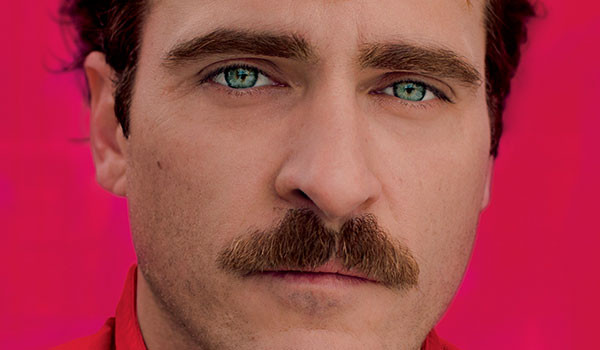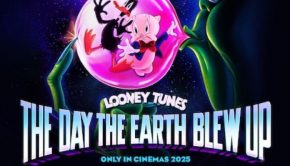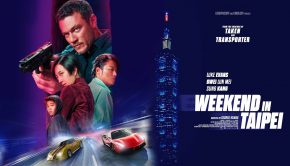Her – Film Review
Reviewed by Damien Straker on January 9th, 2014
Sony presents a film by Spike Jonze
Written by Spike Jonze
Starring: Joaquin Phoenix, Scarlett Johansson (voice), Rooney Mara and Amy Adams
Running Time: 126 minutes
Rating: MA15+
Release Date: January 16th, 2014
The science-fiction genre in Hollywood has for some time amounted to little more than action films that happen to be set in the future and feature high-powered armaments. After Star Wars and more recently Avatar, there has been a tendency to build computer generated worlds but only fill them with aliens and laser guns. Science fiction films where technology and special effects are used to explore human behaviour and make sociopolitical comments about the present and the future are becoming increasingly scarce.
Fortunately, director Spike Jonze (creator of oddball favourites Being John Malkovich and Adaptation) has made a science-fiction film that is partly a glimpse into the future of advanced computer software, a current day look at our overreliance on technology and also the unlikeliest of love stories. Who would have predicted that one of the more aching screen romances in recent years would be between a man and his computer? What is more frightening about the premise is that you come to believe and be touched by it.
The film is set in the distant future of Los Angeles, with Joaquin Phoenix cast as Theodore, a shy writer whose profession is to produce love letters for other people. He is detached from the world because of a painful breakup from Catherine (Rooney Mara). He still has some joy from seeing his college friend Amy (Amy Adams, pivotal in a subplot), who has her own dysfunctional relationship. His life takes a bizarre turn when he is introduced to Samantha (voiced by Scarlett Johansson), a highly sophisticated, verbalised operating system, put together from the DNA of her creators. She is described as a consciousness, able to think and feel on her own, gaining new experiences by herself and through what Theodore sees. She is carried with him in a portable device, like a smart phone, and together they fall in love.
Jonze completes the extraordinary tasks of avoiding the most obvious movie clichés and pitfalls that could come with this utterly bizarre concept. The film succeeds as a human drama because the director finds the right tone. It’s sometimes hilarious (how could it not be?) but the mood is mostly melancholic and dream-like because no one here is playing this as an extended joke. This is a sad world where characters, including Samantha, are craving human connection and longing for new experiences and emotions. The dramatic conflict is real because as Samantha begins thinking and feeling for herself, and grows closer to Theodore, he begins making the same judgments and pedantic criticisms of her that affected his previous relationship.
Hollywood’s exploration of man’s relationship with computers, from HAL 9000 in 2001: A Space Odyssey to The Terminator, has mostly revolved around their destruction of us. Jonze aims higher, attempting to answer challenging philosophical question relating to epistemology and existence. When machines are capable of thinking, feeling and learning does that knowledge stop them being robotic and draw them closer to true humanity? Contrastingly, as humans grow further away from each other and become more reliant on technology, will we forget personal uniqueness and that people’s desires are different from our own?
On top of its plethora of ideas, we take the film seriously because the actors do too. Joaquin Phoenix’s performance in this film is subtle and challenging. The long duration of unbroken close-up shots on his face provides time for him to embody the shifting emotions of joy and anxiety that a relationship can place on a person. The close-ups also infer that humanity and individuality is defined not merely by knowledge but our own unique faces that define us within our species. Scarlett Johansson, who replaced all of Samantha Morton’s original voice work, makes a strong case for Oscar nominated voice acting. With her singing background, she knows how to alter the pitch of her voice, infusing it with both humour and emotion. Her disembodied presence becomes charming and sad, rating as some of the best work the actress has ever done.
The film’s visual compositions are also an expression of social detachment. Los Angeles is this film reminded me of China with its high rise buildings covered in a grey, overhead smog, which hints at the power corporations have in the future. To express Theodore’s isolation, his apartment looks partly cold but also modern, with its metal and glass surfaces. It is old and new, reflective of his psychological inability to move forward from his personal mistakes, despite all the technological advances around him. Similarly, in the film’s production notes it states that his clothes were designed with a 1920, 30s and 40s look. The retro costume stylising, combined with a wide angle lens as Theodore walks outdoors talking to Samantha, further suggests his segregation from genuine human emotions in the present day.
It is worth noting that in 2003 Scarlett Johansson starred in Sofia Coppola’s film Lost in Translation, where a character was rumoured to be based on Spike Jonze because he used to be married to the director. Like that film, this is a story about a character that is fractured and hurt by one relationship and faces the impossible task of fulfilling that void with something that is inevitably unsustainable. The sincerity with how this beautiful, slightly long film is made, and the quality of the performances, are suggestive of a filmmaker who knows very personally what they are talking about.
Summary: Who would have predicted that one of the more aching screen romances in recent years would be between a man and his computer?












